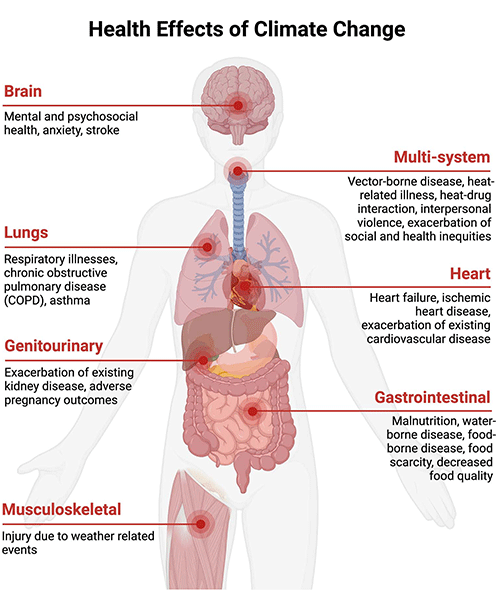Special Report Looks at Radiology’s Role in Combatting Climate Change
Technology, purchasing practices among areas of focus for increased sustainability

The health care system is a substantial contributor to greenhouse gas emissions. Radiology’s role within the system presents an opportunity to lead low-carbon, sustainable initiatives in workplaces and communities, according to a special report published in Radiology.
The report addresses the importance of climate change to radiologists and the medical imaging community, including the impact on human health and health equity, the contribution of health care and medical imaging to the climate crisis, and the impetus to build a more sustainable future.
“The focus is on actions and opportunities to address climate change in our role as radiologists and to link our actions with their impact and expected outcome,” said the report’s senior author Kate Hanneman, MD, MPH, associate professor in the Department of Medical Imaging at the University of Toronto and sustainability lead at University Medical Imaging Toronto. “Because radiologists are adept at managing rapid technological change, we are ideally positioned to lead these initiatives within our departments, health care systems and communities.”
Climate change occurs as a result of increasing carbon dioxide (CO2) and other greenhouse gases in Earth’s upper atmosphere. Due to its large size and its intensive use of resources, the global health care system emits more than 2 gigatons of CO2 equivalent annually and accounts for 5 to 8.5% of total greenhouse gas emissions in developed nations.
While most greenhouse gases emitted by the health care sector come from manufacturing, transporting, using and disposing of purchased goods, the sources of emissions from individual specialties differ. For diagnostic radiology, most emissions come from the production of medical imaging equipment and the energy needed to power it. Overall, medical imaging is estimated to account for 1% of global greenhouse gas emissions.

Illustration shows the health effects of climate change grouped according to organ system. Created with BioRender.com.
https://doi.org/10.1148/radiol.230229 © RSNA 2023
Radiologists Well Positioned to Play Leading Role in Greener Health Care
Although the dangers of climate change have been known for decades, health care has been slow to address its substantial carbon footprint. However, there is a growing movement to align health care’s environmental practices with its core mission to minimize harm and protect public health.
“The harmful health effects of climate change disproportionately impact those already vulnerable due to social, environmental and public health factors,” Dr. Hanneman said. “Groups most likely to be harmed are those already experiencing health inequities due to age, race, culture, sex/gender, socioeconomic status, geographic location and chronic illness.”
As the focus on sustainability increases, radiologists are well positioned to play a leading role in pushing for greener health care. Experts in technology, radiologists can innovate more sustainable methods of care, such as finding new applications for telemedicine and telecommuting, reducing energy-intense imaging sequences that do not add clinical value, and scheduling patients more efficiently to minimize idle time for equipment.
As key players in the purchasing process, radiologists can prioritize the energy efficiency of equipment in their purchasing decisions and work with vendors to improve the sustainability of their products.
The report outlines a framework for environmentally sustainable health systems that can be applied in radiology departments.
First, reduce demand for health care services by supporting policies and programs that promote public health, including screening. Second, match the supply of health services to the demand; for example, by ensuring the appropriate use of imaging. Finally, reduce emissions from the provision of necessary care.
The authors also offer several toolkits highlighting actions institutions, organizations and individuals can take to address climate change.
“On the current trajectory of greenhouse gas emissions, climate change will become the defining narrative of human health,” Dr. Hanneman said. “Mitigating emissions offers the opportunity for a future in which local and global populations not only survive but thrive.”
For More Information
Access the Radiology article, “Climate Change and Radiology: Impetus for Change and a Toolkit for Action.”
Read a previous RSNA News story about radiology’s environmental impact: